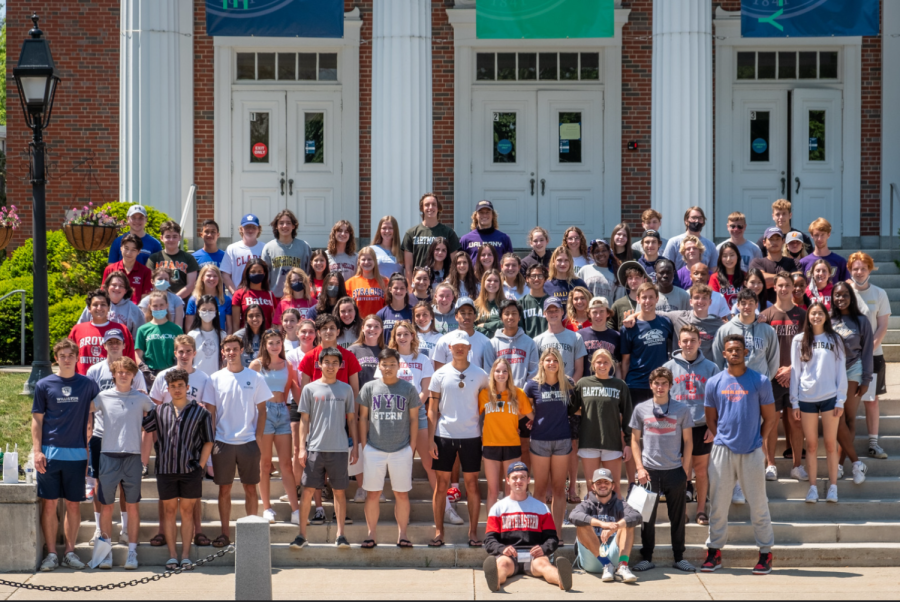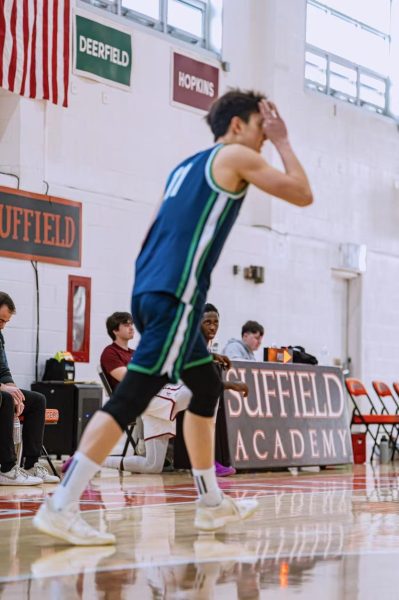Navigating the College Process as an International Student
International students at Williston find the college process to be very different and at times, harder than students from America, due to the lack of parental guidance as well as their international status. The College Counseling office, however, is working to change that.
The thick layer of red tape that awaits when it comes time to apply for and obtain a student Sisa along with having to maintain a full-time course load to stay in compliance with F-1/F-3 Visa requirements are just a few of the hardships international students must face when attending American institutions.
Lorenzo Redaelli is a post-graduate in the soccer recruitment process; he thinks that, in some ways, the fact that he lives in Milan, Italy, puts him at a disadvantage compared to his American soccer peers.
“Many camps take place during the summer, and for us international [students], this means that we have to fly to the United States (which entails a valid Visa or ESTA – a temporary Visa for vacation purposes), find a place where to stay, and on top of that, pay the soccer showcases.” This is an expensive process, Lorenzo said, which can be prohibitive.
Lorenzo, unlike many American students The Willistonian spoke with, has had to navigate a lot of the college process alone. He also thinks that he is at a disadvantage and not as prepared as American students.
“I believe that the American students’ path to college is a bit facilitated,” he said. “Since they were born in the American scholastic system, their educational path is already well marked, and the selection starts earlier in their lives. The same happens for their parents, who start saving money soon in their lives and therefore have already considered the investment that college will entail.”
Financial aid is a large part of many international students’ college process. Lorenzo attests that being from another country makes it harder to get this aid.
“You are immediately classified as an out-of-state student, and this raises the tuition,” he said. “On top of that, the financial aid process stresses us internationals since our tax or income system differs a lot from the American one … Also, the percentage of financial aid given to internationals is significantly smaller than the one granted to U.S. students.”
Lorenzo has found that he has had to work harder in the classroom and on the field to distinguish himself from Americans.
Being an international student athlete does help in some cases, Lorenzo said. Many colleges across the nation want their teams to be “multiethnic and multicultural to show an inclusive and open-minded community. Therefore, they don’t just look for talent but also for the diversity, which an international athlete provides,” he said.
Melody Pan is an international student from China, and her views coincide with Lorenzo; the geographic, language, and cultural barriers have made it nearly impossible to receive assistance from her family in Shanghai. Melody’s parents provided her with a college consultant agency outside of school, which she says helped a lot.
Going to an American high school as an international student makes her think she has a better chance to get into certain schools than kids applying from high school in China.
“I just feel like, for Chinese students, the college process is a little bit different in the way that our parents sent us to boarding schools with hopes that we could go to prestigious schools,” she said.
Emily McDowell, the Acting Director of College Counseling, told The Willistonian about how all Williston students, including international students, get help from the counseling office.
“All students at Williston gain a personal guide to this process, and that guide is able to apply years of knowledge and experience in the many facets of the application process,” she said.











